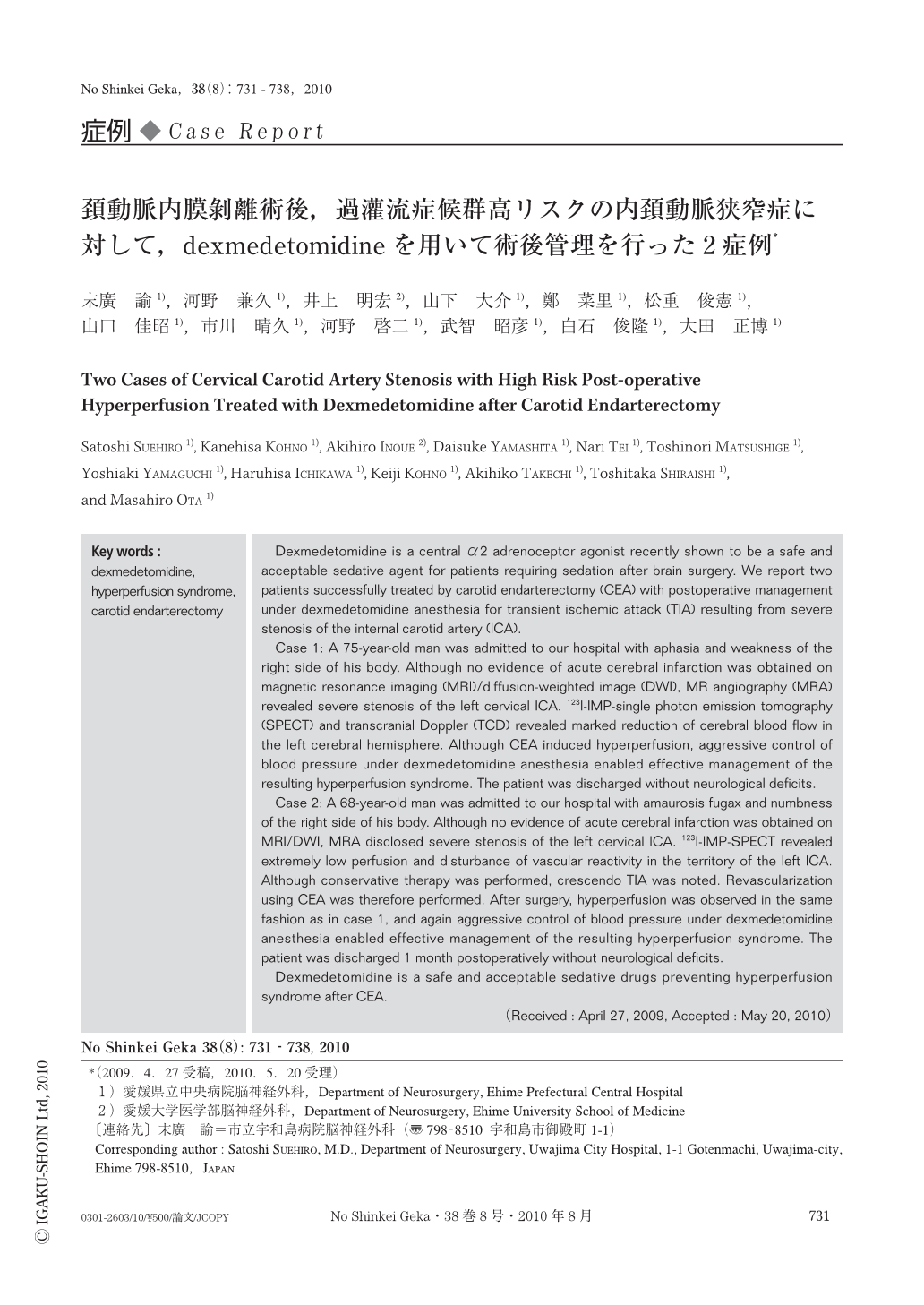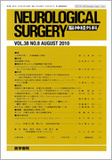Japanese
English
- 有料閲覧
- Abstract 文献概要
- 1ページ目 Look Inside
- 参考文献 Reference
Ⅰ.は じ め に
頚部内頚動脈狭窄性病変の治療法には,頚動脈内膜剝離術(carotid endarterectomy:CEA)や頚動脈ステント留置術(carotid artery stenting:CAS)があり,その重要な術後合併症の1つとして過灌流症候群が報告されている7,8,13).現段階では過灌流症候群の診断,治療に関する明確な指針は存在していないが,一般的には過灌流症候群と判断された場合,プロポフォールを用いて挿管・呼吸管理下に鎮静を行い,厳重な血圧管理を行っている施設が多い2).今回,われわれは,CEA術後に脳血流検査で過灌流の所見を認めた高度内頚動脈狭窄症の2例を経験し,術後デクスメデトミジン(プレセデックスTM)を使用して鎮静,血圧管理を行うことで,気管内挿管を術後2日以内ですませ,重篤な合併症を起こすことなく良好な結果を得ることができたので報告する.
Dexmedetomidine is a central α2 adrenoceptor agonist recently shown to be a safe and acceptable sedative agent for patients requiring sedation after brain surgery. We report two patients successfully treated by carotid endarterectomy (CEA) with postoperative management under dexmedetomidine anesthesia for transient ischemic attack (TIA) resulting from severe stenosis of the internal carotid artery (ICA).
Case 1: A 75-year-old man was admitted to our hospital with aphasia and weakness of the right side of his body. Although no evidence of acute cerebral infarction was obtained on magnetic resonance imaging (MRI)/diffusion-weighted image (DWI), MR angiography (MRA) revealed severe stenosis of the left cervical ICA. 123I-IMP-single photon emission tomography (SPECT) and transcranial Doppler (TCD) revealed marked reduction of cerebral blood flow in the left cerebral hemisphere. Although CEA induced hyperperfusion, aggressive control of blood pressure under dexmedetomidine anesthesia enabled effective management of the resulting hyperperfusion syndrome. The patient was discharged without neurological deficits.
Case 2: A 68-year-old man was admitted to our hospital with amaurosis fugax and numbness of the right side of his body. Although no evidence of acute cerebral infarction was obtained on MRI/DWI, MRA disclosed severe stenosis of the left cervical ICA. 123I-IMP-SPECT revealed extremely low perfusion and disturbance of vascular reactivity in the territory of the left ICA. Although conservative therapy was performed, crescendo TIA was noted. Revascularization using CEA was therefore performed. After surgery, hyperperfusion was observed in the same fashion as in case 1, and again aggressive control of blood pressure under dexmedetomidine anesthesia enabled effective management of the resulting hyperperfusion syndrome. The patient was discharged 1 month postoperatively without neurological deficits.
Dexmedetomidine is a safe and acceptable sedative drugs preventing hyperperfusion syndrome after CEA.

Copyright © 2010, Igaku-Shoin Ltd. All rights reserved.


